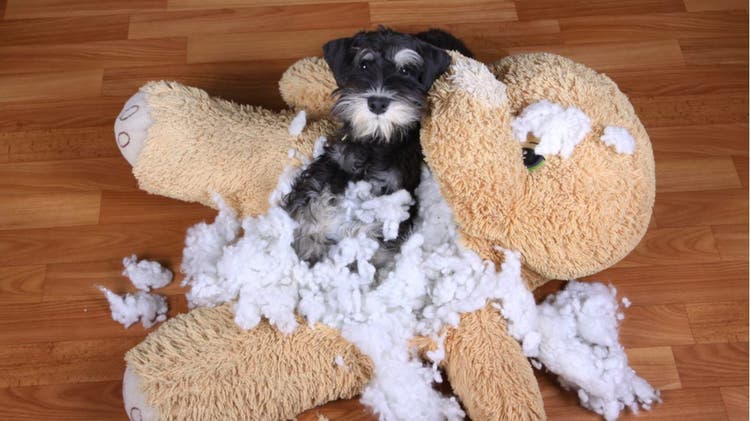
Understanding Bad Dog Behavior
It can be frustrating when your dog misbehaves. A dog’s actions often don’t make sense to humans, and it can be hard to understand why a dog behaves in a destructive fashion.
Let’s discuss the causes of bad behavior and methods for correcting it.
Changing Bad Behavior
If you have a dog that is behaving badly, you need to correct the problem, but to do that, you need to understand your dog’s behavior. First and foremost, remember that dogs are pack animals and your dog sees themselves as part of your pack. If you allow your dog to continue their detrimental behavioral, they will think that they are the alpha dog, and behavioral problems will persist.
How many times have you uttered the words, “No! Bad dog!” only to find that it has no effect on your dog’s behavior? That’s because punishment doesn’t work. Most of the time, dogs don’t understand what they’re being punished for.
Changing dog behavioral problems isn’t quick and easy; it can take weeks or months to achieve. The most important thing to remember is that any attention rewards your dog, regardless of whether that attention is good or bad. If you are trying to change levels of dog obedience, always remember that punishment doesn’t work.
The key to changing behavior is not to allow your dog to be rewarded for it. Instead of yelling, give your dog the chance to succeed, and reward them when they triumph. For instance, if your dog is jumping up, tell them to lie down—and when they do, give them a treat. This is the type of dog training that will eventually stop obedience issues.
Also remember the old adage, “a tired dog is a good dog.” It’s true! A tired dog is less likely to exhibit behavioral problems, so make sure that your pup gets plenty of opportunities to run and play. Exercise is important for all dogs, as it helps them use pent up energy, so they’re less likely to direct that energy toward unwanted behaviors.
What Is a Dog Behaviorist?
If you are having trouble with a misbehaving dog, one option to get them back on the right track is to consult a dog behaviorist. These specialists try to find triggers for a dog’s mischief by examining their environment and noting factors that may lead to bad behavior.
Dog Behavior Training Tips
Did you know that behavioral problems are the number one reason dogs are surrendered to shelters or euthanized?
Here are some training tips for common behavioral issues:
- Inappropriate Chewing. Dogs explore their environment with their mouths, so chewing comes naturally. Chewing on its own is not necessarily a bad thing, as it can help relieve boredom and stress, and it can help keep your dog’s teeth clean. The key is to get your dog to chew appropriate items. So, if you find your dog chewing on your shoe, redirect their chewing elsewhere, like to a chew toy or rope. It is also important to praise your dog for selecting the appropriate chew toy.
- Digging in the Yard. The activity of digging is extremely rewarding to dogs. Your dog may dig because they caught a scent in the air or simply want to release some energy. If you don’t want your dog to dig holes in your yard, redirect their digging activities. Give your dog a sandbox or section off a portion of the yard where it is okay to dig. Reward your dog with treats and toys to make this new digging spot more exciting than their previous point of interest.
- Begging at the Table. Consistency is the key to stopping poor behavior, so it is important to make sure that no one in the family feeds the dog at the table. Try to distract your dog from your family’s mealtime by giving them an appropriate activity, like enjoying a food puzzle.
- Barking at the Doorbell. Your dog might bark at the doorbell because they are anxious or excited about visitors. Some dogs believe that their barking is what makes you open the door, so by barking they are attempting to train you. Redirect your dog’s attention from the doorbell, and try to get them to sit quietly on the doormat and wait for you to open the door.
- Urine Marking. Dogs urinate on different items and places to mark their territory or to leave messages for other dogs. When you catch your dog urine marking in the house, interrupt the activity with a “no” and take them outside immediately. When you get outside, make sure to reward or praise your dog for urinating outdoors. Also, to prevent your dog from continuing to urinate indoors in the same spot, use an enzyme cleaner to remove the scent.